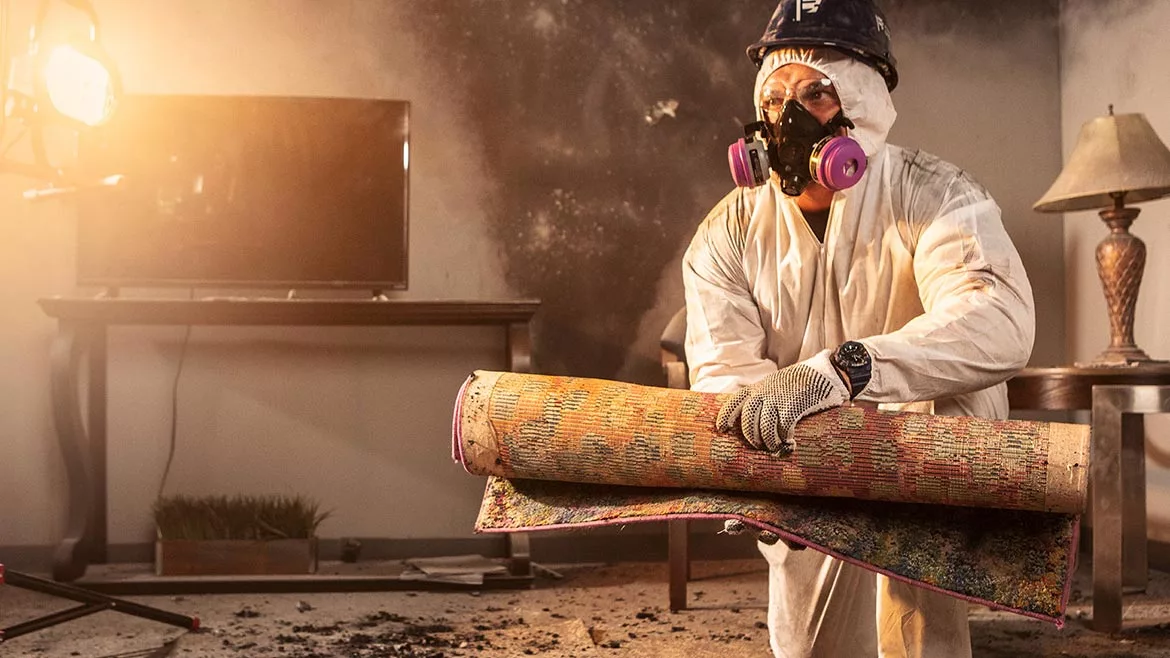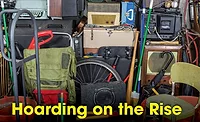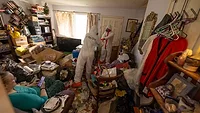Hoarding Cleanup: A Matter of Safety, Collaboration and Sensitivity

Photo credit: First Onsite Property Restoration
There are some essential best practices that professional restoration providers should adhere to when remediating a hoarding environment. Safety should be the primary concern, communicating with fire, police and other authorities to understand the potential hazards prior to the cleanup. The project manager and the team should consider the possible presence of biological hazards, including animal or human feces, mold, bacteria, insects and blood-borne pathogens. For this reason alone, everyone should wear full personal protective equipment (PPE) throughout the entire project. Additionally, the restoration company should provide full training to their teams on biohazard cleanups for employees annually. Provide employees post-exposure evaluations and follow up with medical personnel in the case of an exposure incident. Have an emergency process and plan established well before hoarding mitigation services are offered, and create a staging area.
Hoarding is such an attention-grabbing topic; that’s why they make TV shows about it. The term hoarding means to “gather something in large quantity.” More specifically, the disorder that has been named hoarding is defined as “a persistent difficulty discarding or parting with possessions because of a perceived need to save them.” There are many types of harmless hoarders out there. As restoration partner to our clients, doing a thorough, professional job for everyone is the goal regardless of the conditions.
Hoarding becomes an issue when people lose perspective and collect so much that they could never reasonably maintain the space they are holding it in. I have seen hoarders who have expansive homes or apartments but all they have left are narrow passageways in between piles and piles of stuff. Even worse, I have seen places where I have had to climb over mountains of stuff to traverse the space. Talk about a safety issue!
One of the biggest issues with hoarders is cleanliness. There is no possible way to keep a place clean when it would take you days or weeks to move everything around. As restoration partners and mitigation specialists, having the proper tools, equipment and cleaning products is essential to getting the space to an acceptable level of cleanliness so that it transforms into a safe environment. Safety is the goal. However, many hoarders give up on cleanliness; that is when issues like rodents or insects or mold creep up, and odors begin migrating.
When you watch any of the hoarding TV shows, they mostly focus on houses in suburban areas. That is likely for the following reasons: Individuals have space to spread out their production equipment; there are fewer peripheral people involved to get permission from; and the best reason is that hoarders who live in a single-family dwelling are generally able to let it go longer. The issues are more visually stimulating. But make no mistake about it; hoarders do exist in urban areas and non-single-family dwellings. These issues can be very disturbing to neighbors who must deal with foul odors, rodents and roaches due to their neighbors.
Because First Onsite provides services in large, urban, metropolitan areas, most of the time we are contacted regarding hoarding in a commercial building and there are neighboring complaints that have forced facilities management to take action – sometimes even legal action to force someone to allow their place to be cleaned up. In these cases, the job is much simpler yet very complicated from a safety and health standpoint. We have certain conditions that must be agreed to before we begin. The occupant cannot be present when we perform our work, but we will consult with them and agree on some sorting processes and certain items to save. We cover our liabilities by having the client sign a waiver allowing us to discard their property and make certain decisions on salvageability based on what is best for the wellbeing of all occupants – not just themselves.
The process of cleanup includes several steps: Bulk removal of trash, then cleaning and disinfecting of all surfaces and remaining contents. Then comes extermination and usually some refurbishment like painting or replacement of damaged fixtures. There are several hazards to be careful of aside from the obvious contamination (fungus/bacteria) and odors. We need to look out for sharp objects and rodents hiding amongst the trash. On top of this, when working in an occupied building, several extra precautions need to be taken to limit the migration of the odors and contaminants to other parts of the property. Crews usually place the space under negative pressure and, when removing debris, they double bag and seal the bags with duct tape to limit the odors emanating as they carry bags through the public areas to get them outside.
Sadly, this arduous process is hardly a solution, and more often than not it is just a band-aid and will not be the last time we clean that space up. My current record for cleaning the exact same space up for the exact same reason is at 11. That is because the cause of the issue has not been dealt with or addressed.
We have heard horror stories of people being hired to go in and help someone clean up a hoarding condition. They try to work with the person who will usually lose it in fits of rage brought on by being forced to watch as their precious items get bagged up and removed. There have been cases where a team has worked with someone for three days and the place looks like nothing was thrown out. At the end of the day, it is a matter of safety, collaboration and sensitivity to accomplish the goal.
Looking for a reprint of this article?
From high-res PDFs to custom plaques, order your copy today!








